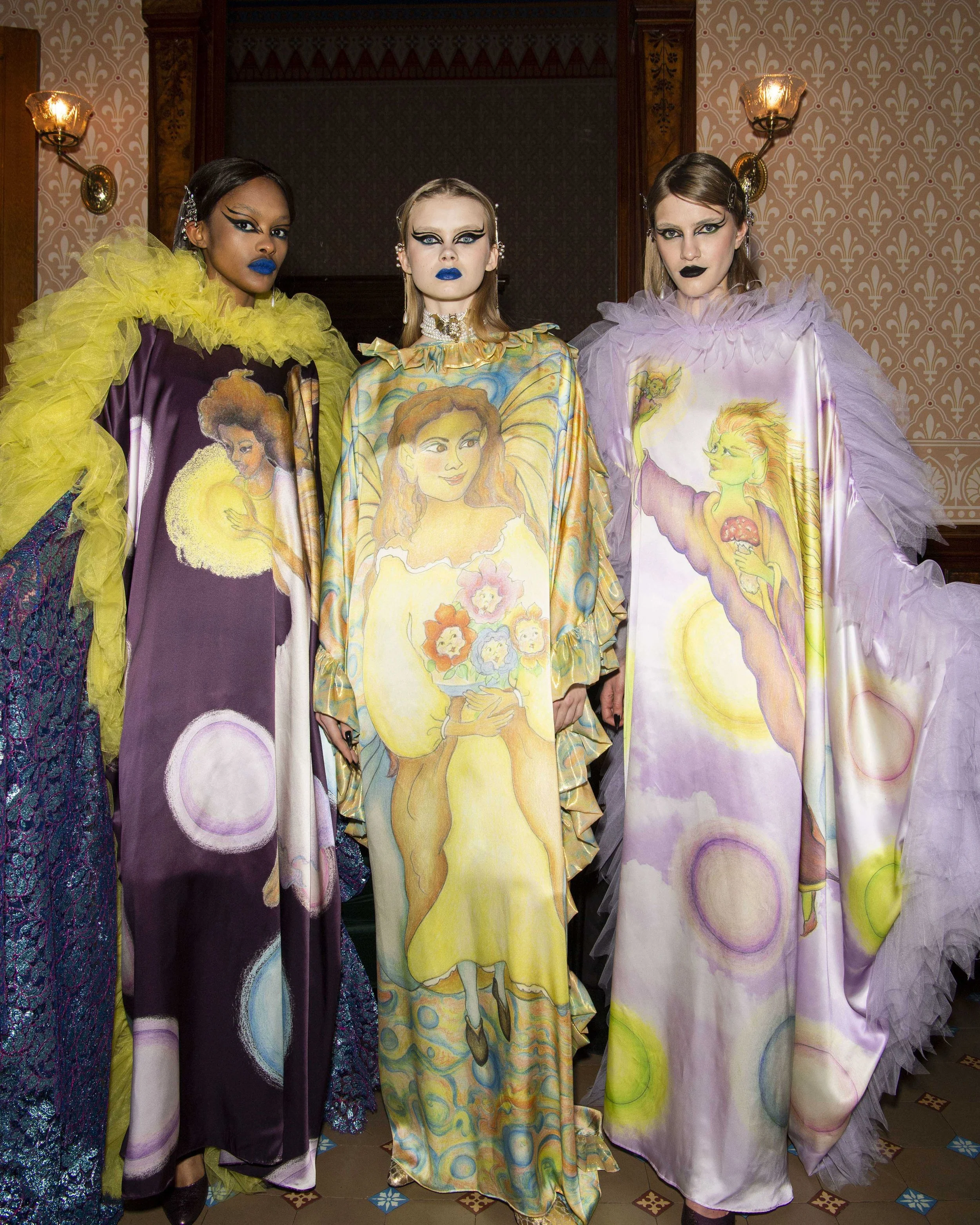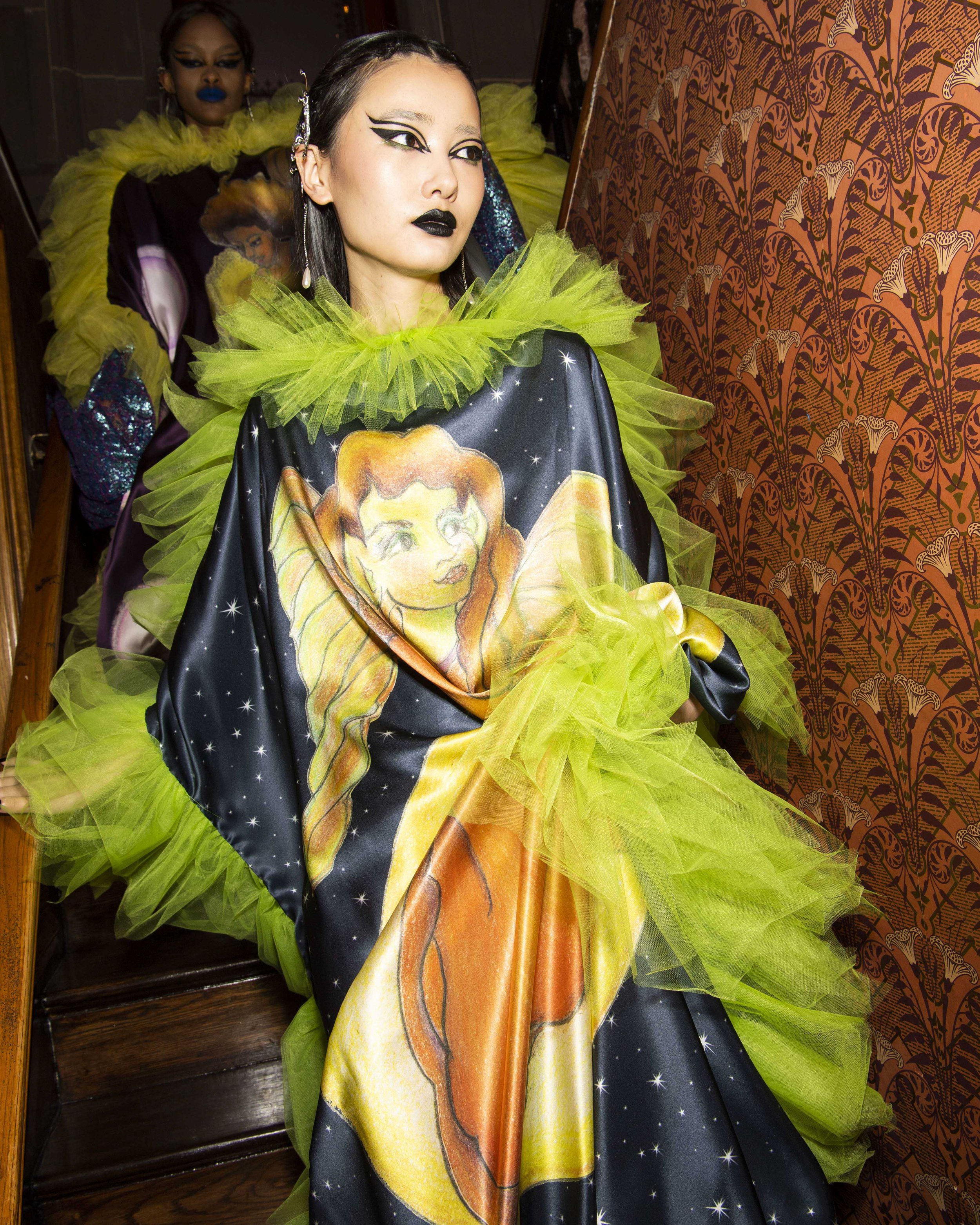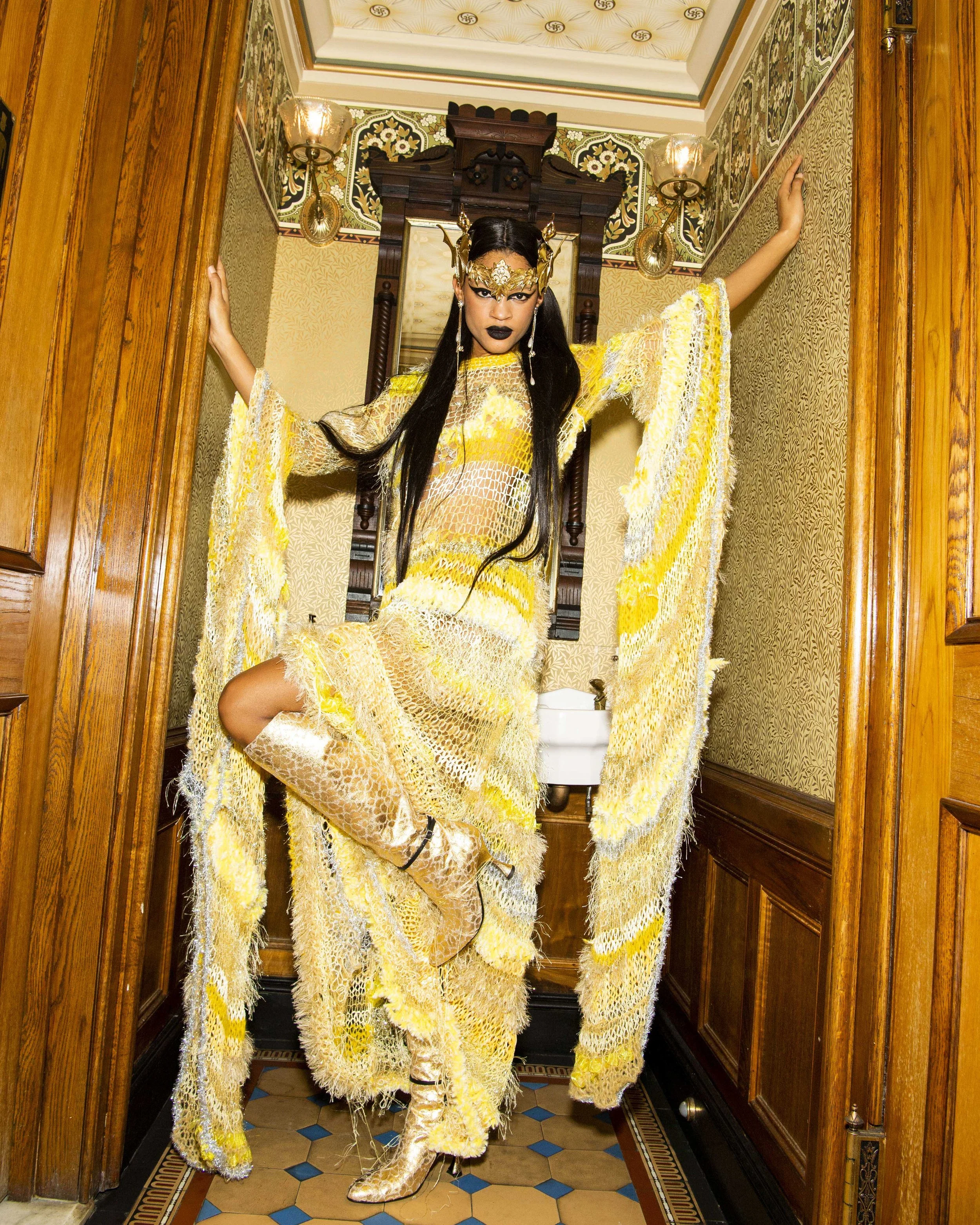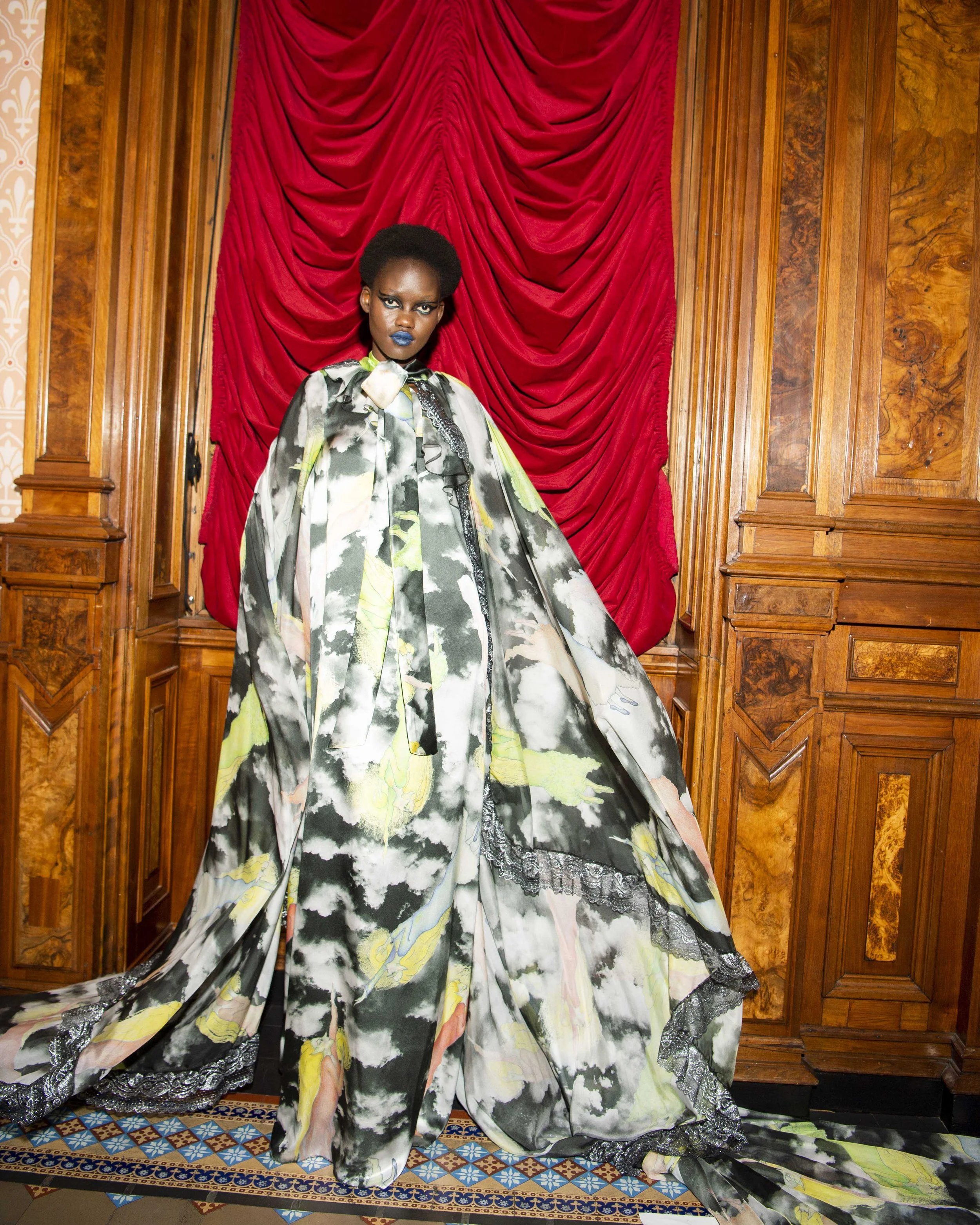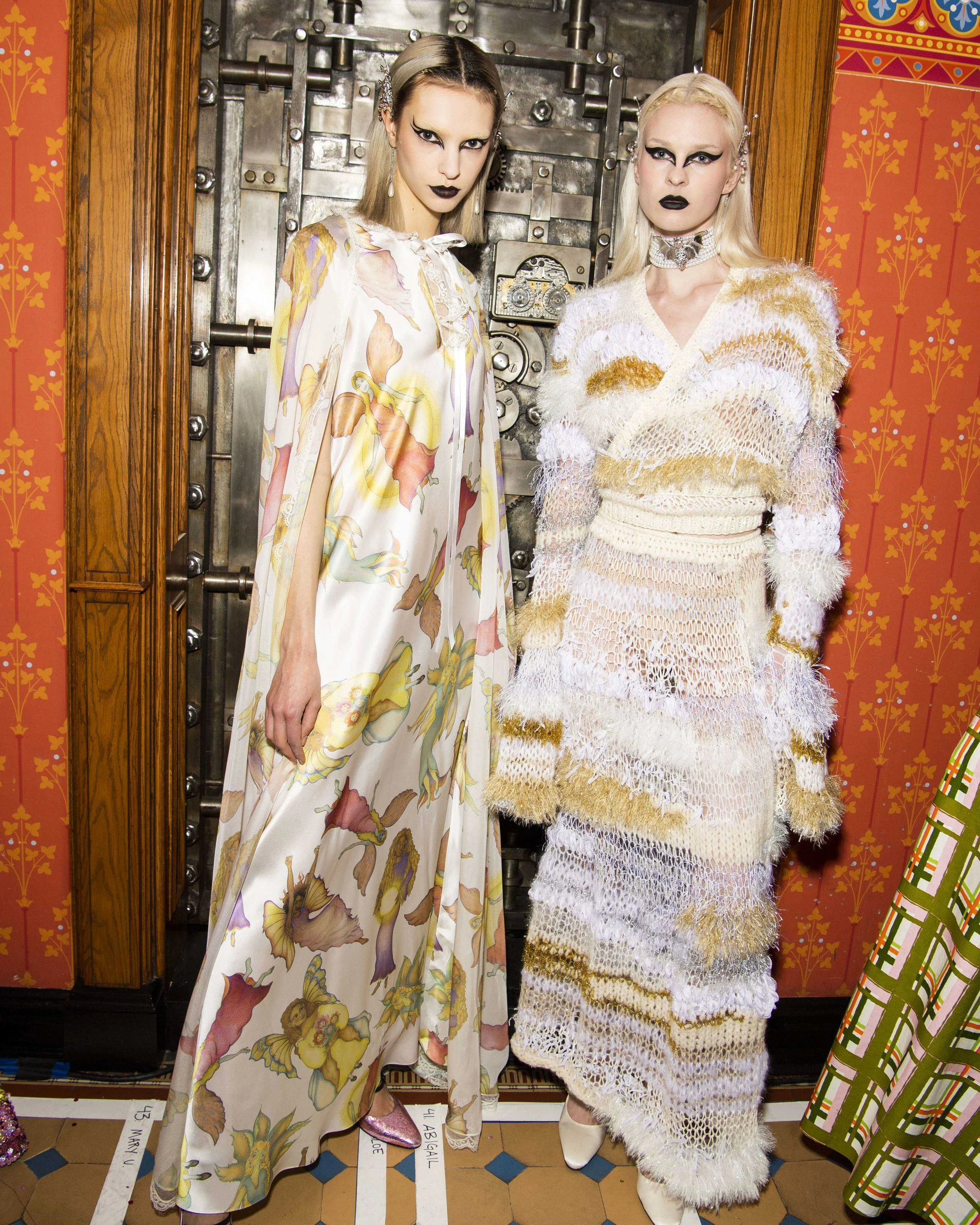Rodarte AW23 'is this going to develop into something bigger?' #NYFW
Photo by Jason Lloyd-Evans
Imagine a Gothic Fairy lair, its grand banquet hall set for a Gothic Fairy fete. Everything is lacquered in silver glitter – table covers, chairs, candelabras, an abundance of food – fruits, breads, even wedding cakes all glistening magically, in the candle-lit glow. (Fairies don't always work solo. Sometimes they bring in wizards from Bureau Betak to decorate.)
Such was the setting of Kate and Laura Mulleavy’s Rodarte, shown under the grand dome of the Williamsburg Savings Bank in Brooklyn. The sisters have long been given to heady flights of imagination, the best of which transport their audiences to wondrous places, sometimes tinged with foreboding. That’s what happened here, to exquisite effect.
Photo by Jason Lloyd-Evans
Photo by Jason Lloyd-Evans
The fairy concept came somewhat out of the blue. “One day you get an idea. You don’t know why you have it; you kind of ruminate, 'is this going to develop into something bigger?'” Laura mused post-show. And so the sisters asked their mother, an artist, to draw some fairies for them to print onto fabric, and it all fell into place. “I think that we were really in our world when we were working on it,” Kate said.
That world can turn dark and mysterious. Before the literal fairies came into view, the sisters set the gothic mood, opening with a series of evocative characters not yet winged, but otherworldly still. Dark, graphic makeup defined their eyes atop their distinctive black looks, some simple, some elaborately wrought with froth and embroideries. Out first: a long, body-conscious black gown, its vertical lines exaggerated by floor-dusting sleeves. It had an eerie artsiness, as if Morticia Addams had hired Cocteau as dressmaker. There were pious types in covered-up robes with ecclesiastical collars, Regency ladies in giant, royal-blue and blood-red Jane Austin bonnets, a caped circus ringmaster and lingerie brides veiled in black.
Photo by Jason Lloyd-Evans
Photo by Jason Lloyd-Evans
Then. a shift to mesmerizing color. The painterly fairy images floated by on ethereal dresses and caftans, sometimes a single, giant image on front and back, sometimes smaller patterns. A trapeze of vibrant, ombred stripes fell into a long train, and a pair of allover crystal-encrusted tunics pants charmed, one in green, one lilac, their girlish audacity punctuated by trumpet explosions at wrists and ankles. And the designers revived their fabulous webby knits. Some of the models wore wings, and others, giant domes of glittering tinsel, heightening the sense of theater. But most of these Fairyland gems would look glorious in the human realm’s most high-profile land of sartorial dreams – the Oscars.
Creatively, this show was beautiful and enchanting, and the set, extraordinary. Yet it raised a question about the use of materials for creative purposes. The glittered spread was all real food, food that cannot be donated, although the designers could have another end use in mind. On the other hand, the food will decompose beneath the glitter, unlike plastic props. It made one think about the challenges faced by creatives working in visual fields. They must create while being respectful of the Earth and its humans. Their choices are seldom black and white.
